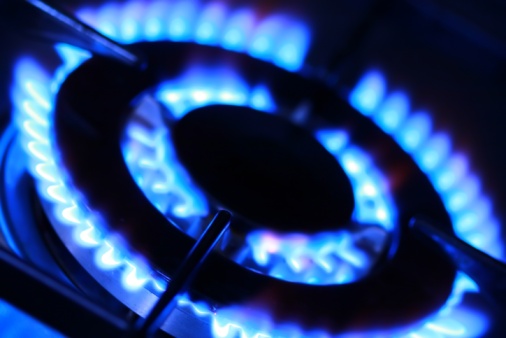
Natural gas futures for March delivery traded down about 1% in advance of the EIA’s report, at around $2.64 per million BTUs, and fell to around $2.60 immediately following the report. Natural gas futures have dropped from around $2.85 per million BTUs since last week. The 52-week low for natural gas futures is $2.61, which was posted Monday.
Natural gas posted a weekly high of around $2.75 on Tuesday as very cold weather moved into the Northeast. But warmer weather west of the Mississippi is pushing the cold temperatures out and milder weather is expected through the weekend. The outlook for next week indicates only moderate demand for heating, not a positive signal for natural gas prices. Demand for natural gas likely will not pick up until a strong cold snap envelopes heavily populated regions of the country for a prolonged period — and that does not appear to be in the forecast.
Stockpiles are about 23.9% above their levels of a year ago and about 1.2% below the five-year average. The relatively milder weather so far in the heating season has curtailed stockpile drawdowns, compared with last year’s much colder weather.
ALSO READ: Crude Oil Inventory Increase Calls Halt to Rising Prices
The EIA reported that U.S. working stocks of natural gas totaled 2.43 trillion cubic feet, about 29 billion cubic feet below the five-year average of 2.46 trillion cubic feet and 468 billion cubic feet above last year’s total for the same period. Working gas in storage totaled 1.96 trillion cubic feet for the same period a year ago.
Stockpiles of natural gas continue to grow — up 50 billion feet year-over-year in just the past week.
Here is how stocks of the largest U.S. natural gas producers reacting to the latest report:
Exxon Mobil Corp. (NYSE: XOM), the country’s largest producer of natural gas, traded up about 1%, at $92.45 in a 52-week range of $86.03 to $104.76. The low was posted Thursday.
Chesapeake Energy Corp. (NYSE: CHK) traded up about 2.1%, at $20.94 in a 52-week range of $16.41 to $29.92.
EOG Resources Inc. (NYSE: EOG) traded up about 2.1% to $96.98. The 52-week range is $81.07 to $118.89.
In addition, the United States Natural Gas ETF (NYSEMKT: UNG) traded down about 1.5%, at $13.29 in a 52-week range of $13.16 to $27.89. The low was posted Thursday.
ALSO READ: Have Gasoline Prices Hit a Bottom?
Are You Still Paying With a Debit Card?
The average American spends $17,274 on debit cards a year, and it’s a HUGE mistake. First, debit cards don’t have the same fraud protections as credit cards. Once your money is gone, it’s gone. But more importantly you can actually get something back from this spending every time you swipe.
Issuers are handing out wild bonuses right now. With some you can earn up to 5% back on every purchase. That’s like getting a 5% discount on everything you buy!
Our top pick is kind of hard to imagine. Not only does it pay up to 5% back, it also includes a $200 cash back reward in the first six months, a 0% intro APR, and…. $0 annual fee. It’s quite literally free money for any one that uses a card regularly. Click here to learn more!
Flywheel Publishing has partnered with CardRatings to provide coverage of credit card products. Flywheel Publishing and CardRatings may receive a commission from card issuers.
Thank you for reading! Have some feedback for us?
Contact the 24/7 Wall St. editorial team.




